Cologne, like many German towns and cities, was left devastated by the Second World War. Photos of the aftermath show piles of rubble, the bare bones of buildings and its famous cathedral scarred by allied bombers.
The post-war resurrection brought with it some recreation of the old, but the city’s planners weren’t afraid to embrace the best of 20th century architecture either. And that means Cologne has some great buildings reflecting the Modernism of the 1950s and 60s. The two come together in the Altstadt, the historic city centre. Here are cobbled alleys, market squares and tall, narrow houses that look as if they’ve been around for centuries. But there’s also the town hall, built on the old Roman settlement, and which is part ancient building and part stunning post-war extension.
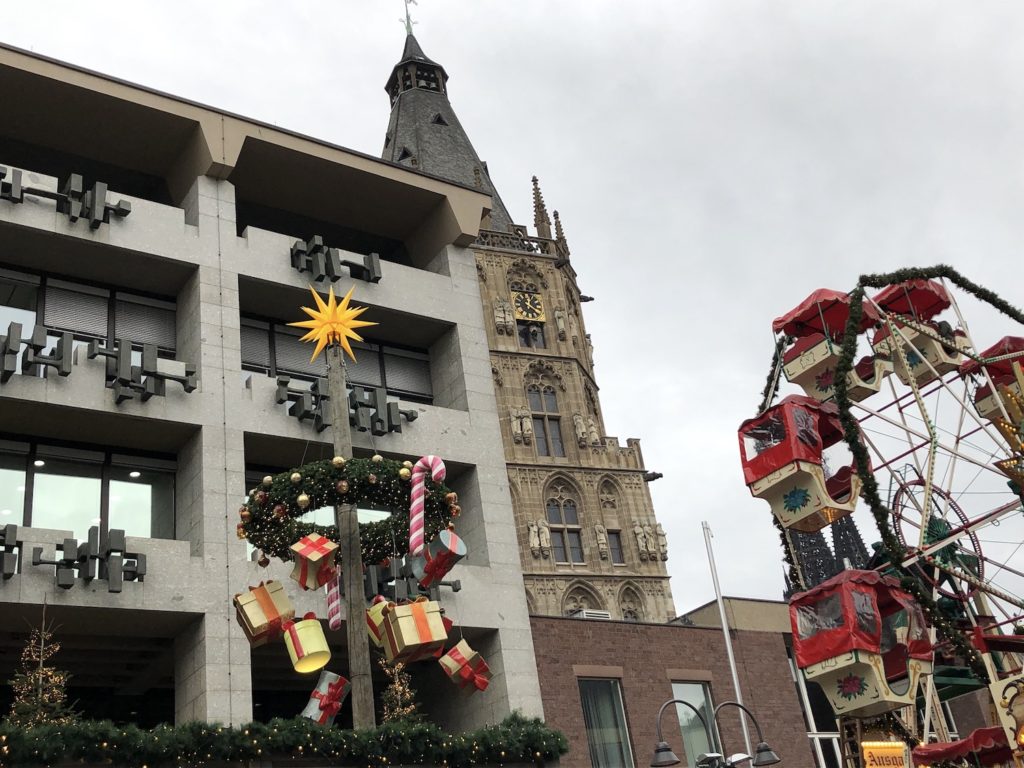
That mix of old and new works well in Cologne because of the thought given to design, something many cities around the world have failed to get right. We went for a walk around the city to find some of its architectural highlights, beginning with its trademark – the Roman Catholic cathedral. Now a UNESCO World Heritage Site and full of tourists, it’s a masterpiece of gothic with two towering spires and a nave that’s breathtakingly cavernous. Work began on it in the 13th century but it wasn’t completed until the 19th, creating one of the largest churches in the world. As we walked around a Christmas service began, complete with lots of bowing and scraping among the faithful.
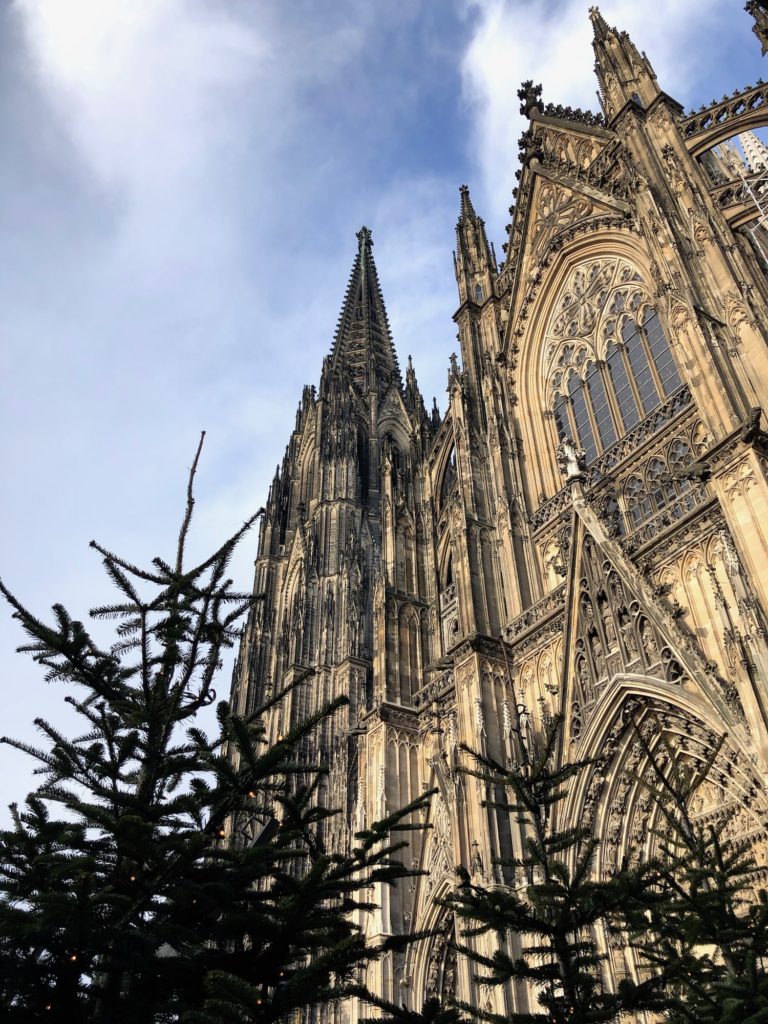
It was a relief, though, to leave the church, religion and the crowds behind, to escape through the shopping streets to the WDR building on one of Cologne’s unpleasant city centre arteries, Tunisstrasse. Designed by Gottfried Bohm, there’s no doubting from the style, the glass, steel and jaunty angles that the WDR Arcades were built in the 1980s. It’s effective enough and certainly more interesting than other buildings of its time but most 80s architecture doesn’t do much for me. Much more successful, at least externally, is the nearby Opera House, a 1950s development of great style but impossible to explore because it’s currently in the throes of a hugely expensive and much-delayed renovation, hidden behind hoardings.
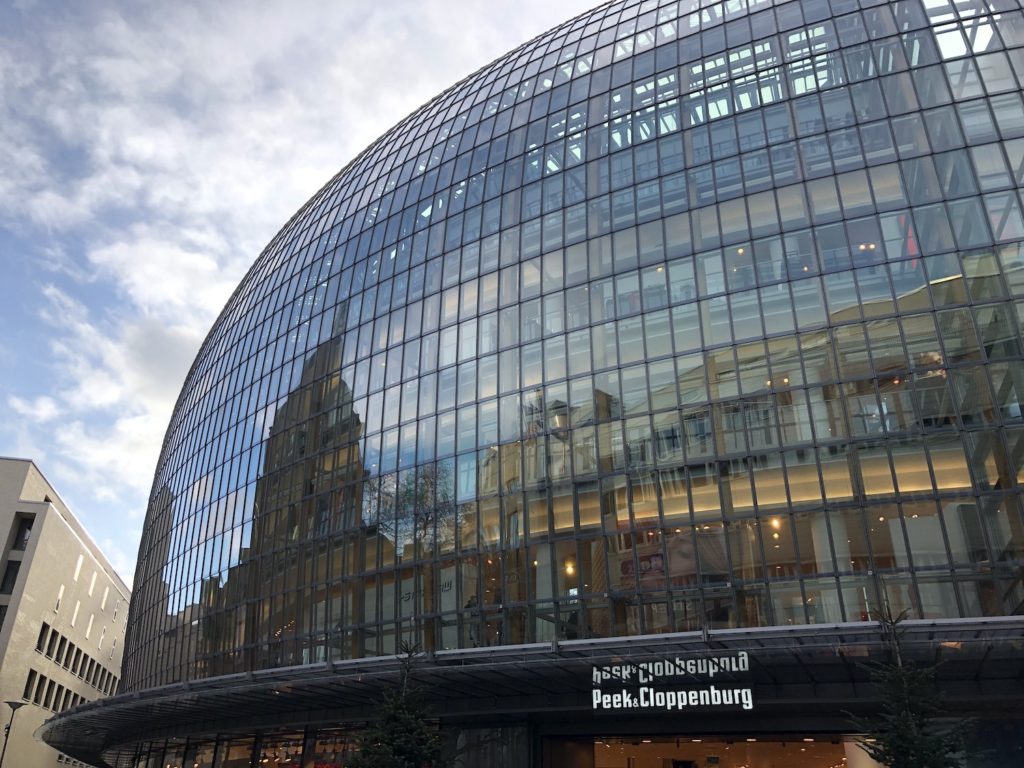
We walked south to the Peek and Cloppenburg department store, designed by big-name architect Renzo Piano. Opened in 2005, the main concrete structure is hidden behind a beautiful curved frontage made mostly of glass and wood that fronts on to the shopping street of Schildergasse. In the sunshine of that Saturday morning, the neighbouring Antonitekirche reflected in its windows. Depressingly the shopping streets were filled with big name global brands and Cologne’s commercial heart looked much like any city the world over. Just beyond, in Neumarkt, was the best of the city’s Christmas market’s, overlooked by the brooding presence of the Basilica of the Holy Apostles.
Our walk took us onward to Hahnentorburg, one of the ancient gates into the old city, the one used by the Holy Roman Emperors on their journey from their coronation site at Aachen to a religious ceremony at Cologne Cathedral. Thanks to war and the other effects of time, there’s precious little of the 13th century original left and the neighbouring city walls are long gone. We found it surrounded by another of the Christmas markets, drab modern architecture and a building site. We stopped, though, for a restorative gluhwein and watched the world go by.
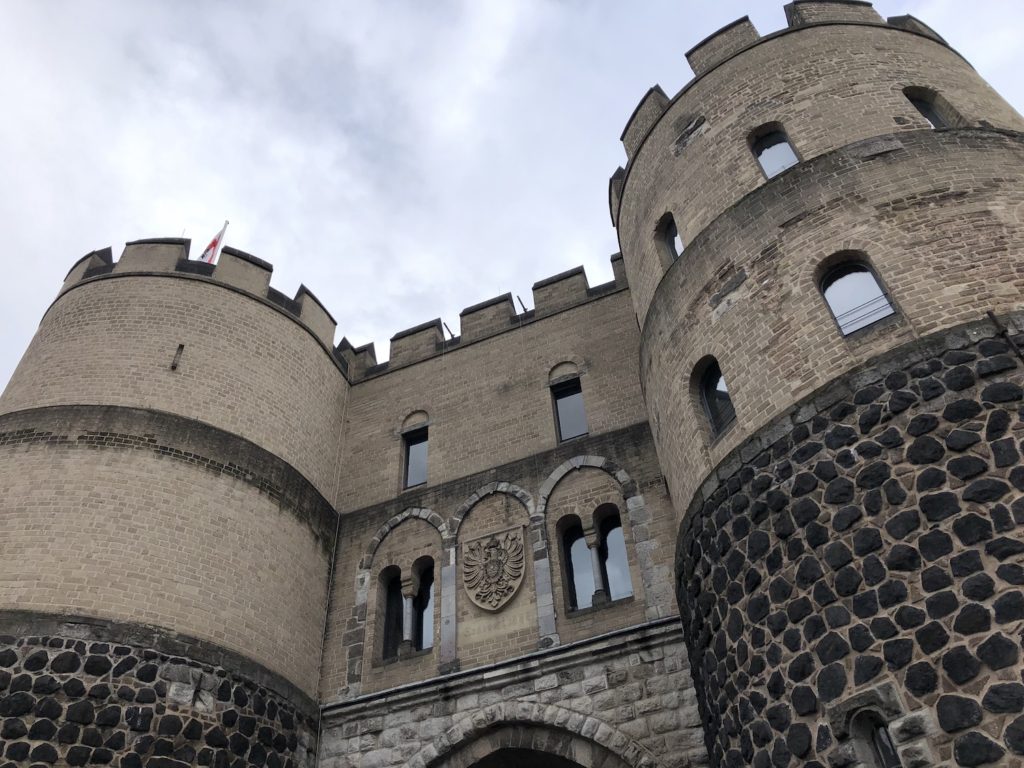
Then, down on Roonstrasse, we got a reminder of the Second World War as well as the modern scourge of anti-Semitism. The Roonstrasse Synagogue is the only one of the pre-Nazi era synagogues that was rebuilt after the destruction of Nazi and wartime eras and it stands today as a community hub for the city’s surviving Jewish community, a community that dates as far back as Roman times. Sadly, the exterior bristles with CCTV cameras and sturdy security gates. A police car was parked opposite. How depressing that in 2019 the lessons of the war years and Nazi rule have not been learnt and that some are still infected with a hatred of the Jews…
We turned off the main road into the Belgian Quarter, with St Michael’s Church at its heart. Today the area has some hip bars, shops and restaurants amid the familiar apartment blocks and looks like an attractive place to live. We stopped for a spot of lunch and a kölsch or two in a funky place on Brusseler Platz called Hallmackenreuther.
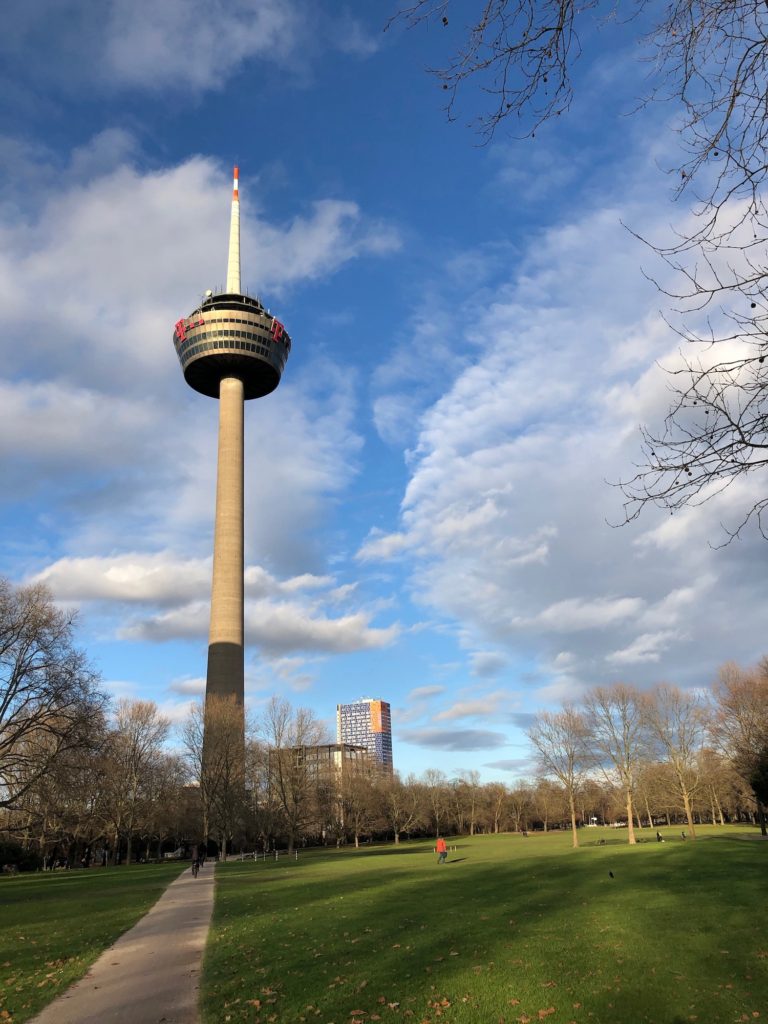
Looking at a map of Cologne, it’s impossible not to see the green ring that encloses the city centre. This is one of the belts of parkland created by the city authorities in the 1920s, one that must be particularly popular in the summer. We crossed into it by the West Cologne rail station, just beyond a small Christmas market at Stadtgarten. In the park stands the giant, 266m Colonius Fernsehturm, a concrete TV tower that was completed in 1981. It’s visible all over Cologne but unlike its equivalents in Dusseldorf and Berlin, its viewing platform and bar is closed to the public and has been for years, which is something of a missed opportunity.
We concluded our walk at the Cologne Tower, one of the tallest office buildings in an otherwise relatively low-rise city. Completed in 2001, it’s had pictures of other Cologne’s buildings applied to the glass using screen-printing techniques and an interesting touch it is too. It’s part of the MediaPark development, one of those modern zones created in numerous cities but that lack any form of life outside of office hours and winter. When we visited it was like the place had been evacuated and I half expected to see tumbleweed rolling past…

